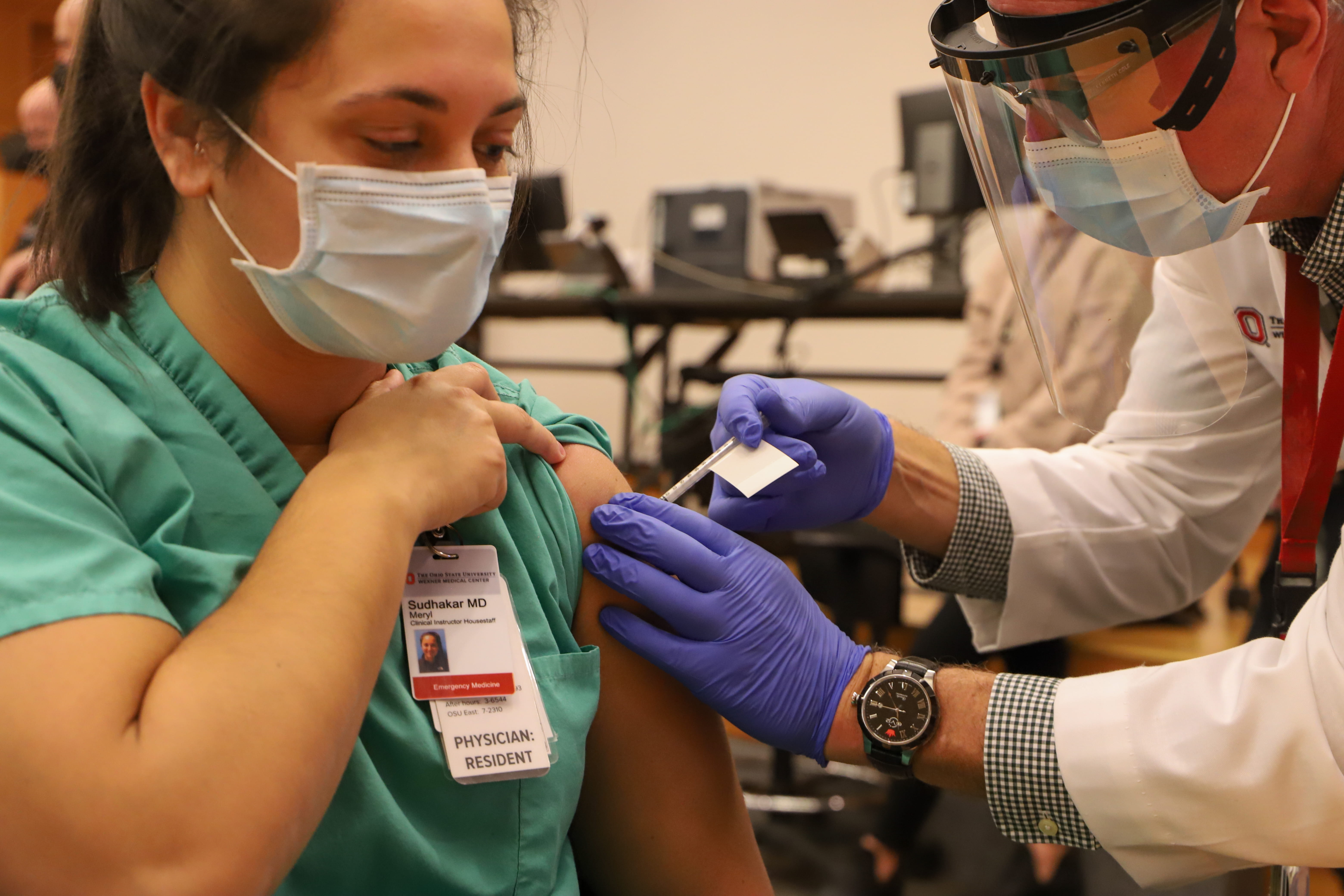
The Oct. 15 deadline to receive the required first dose of the COVID-19 vaccine is steadily approaching, and students would be wise to arrange an appointment before the date — while they still can. Credit: Mackenzie Shanklin | Photo Editor
The university’s Oct. 15 deadline to receive the required first dose of the COVID-19 vaccine is steadily approaching, and students would be wise to arrange an appointment before the date while they still can.
Individuals waiting until the last minute to schedule their shot may face difficulties and potential delay to their vaccination due to narrow appointment availability, Ryan Haley, senior director of ambulatory services at the Wexner Medical Center at Ohio State, said.
“In addition to inpatient surge, the hospitals are overwhelmed,” Haley said. “Makes it very difficult to find a litany of resources to be able to provide vaccine everywhere every day, and so we have sort of a limited number of times and slots that we can do.”
Dr. Iahn Gonsenhauser, chief quality and patient safety officer at the medical center, said despite Ohio State’s first-dose vaccination deadline of Oct. 15, there is no cutoff for scheduling appointments.
“We’re doing everything that we can to accommodate as many folks as sign up,” Gonsenhauser said. “We want to do everything that we can to deliver as many vaccines as efficiently as possible.”
Opportunities to receive booster shots, once approved, could be delayed as well, Gonsenhauser said.
“We would expect that the booster approvals will continue to expand, just like initially vaccinations started small and expanded,” Gonsenhauser said. “There is going to be an increased demand for vaccination and so certainly, if you can schedule right now, you’re going to save yourself a potential delay on the back end.”
Gonsenhauser said spaces and procedures have been planned to handle high capacity and high demand before the Oct. 15 deadline.
“It did strain us, because we had to build new functions, new capacities that we’d never had before,” Gonsenhauser said. “Because we built such large functional delivery mechanisms from the beginning, we’ve really been able to adapt them based on the demands that we are experiencing.”
Due to vaccine demand plateauing, the university and the medical center have moved from the Schottenstein Center and other mass vaccination sites to smaller locations, Gonsenhauser said.
Local clinics and retail pharmacies offering the vaccine can also help to accommodate demand, Gonsenhauser said.
Depending on the nature of demand, staffing could range from as little as one nurse with a cooler full of vaccines to a more substantial setup with multiple personnel, Gonsenhauser said.
“In general, you want to have a clinician, a licensed medical provider that can oversee a vaccination arena, or vaccination environment, so that they can monitor for any adverse effects, any allergic reactions, things of that nature,” Gonsenhauser said. “That’s really dependent on the size and scope of the system that you want to put together.”
The general public can schedule vaccine appointments at Outpatient Care East sites in Upper Arlington and Worthington, and some at McCampbell Hall, Haley said.
The medical center discourages individuals from waiting until the last minute to schedule vaccination appointments. With more retail vaccine availability, there are additional opportunities off campus for students to use as an alternative, Haley said.
“It’s going to be tougher and tougher, understanding that Ohio State is going to do their best to try to provide some access, but there’s other options in town,” Haley said.
Gonsenhauser said as the public realizes how effective and safe the vaccines can be, demand is starting to rise.
“I really encourage people to talk to as many of their friends, colleagues and acquaintances as they can to try and encourage them to go out, schedule their vaccine, get their vaccine, get their booster — if they’re eligible for it — and help us in this pandemic,” Gonsenhauser said.


